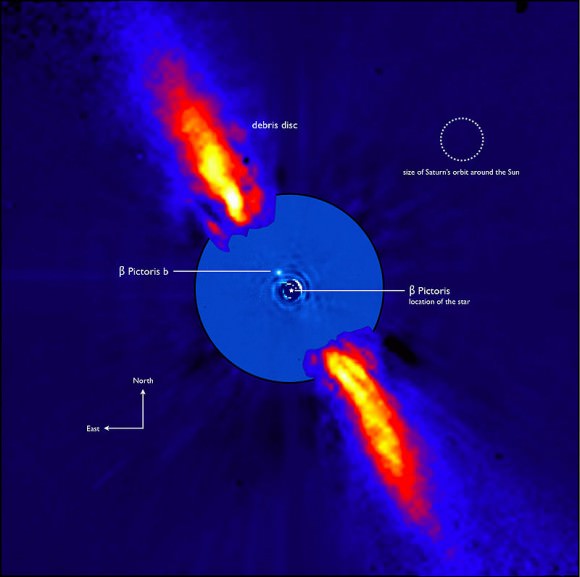A massive rogue planet has been discovered in the Beta Pictoris moving group. The planet, called PSO J318.5338-22.8603 (Sorry, I didn’t name it), is over eight times as massive as Jupiter. Because it’s one of the few directly-imaged exoplanets we know of, and is accessible for study by spectroscopy, this massive planet will be extremely important when piecing together the details of planetary formation and evolution.
Most planets outside our solar system are not directly observable. They are discovered when they transit in front of their host star. That’s how the Kepler mission finds exoplanets. After that, their properties are inferred by their gravitational interactions with their star and with any other planets in their system. We can infer a lot, and get quite detailed, but studying planets with spectroscopy is a whole other ball game.
The team of researchers, led by K. Allers of Bucknell University, used the Gemini North telescope, and its Near-Infrared Spectrograph, to find PSO’s radial and rotational velocities. As reported in a draft study on January 20th, PSO J318.5338-22.8603 (PSO from now on…) was confirmed as a member of the Beta Pictoris moving group, a group of young stars with a known age.
The Beta Pictoris moving group is a group of stars moving through space together. Since they are together, they are understood to be formed at the same time, and to have the same age. Confirming that PSO is a member of this group also confirmed PSO’s age.
Once the age of PSO was known, its identity as a planet was confirmed. Without knowing the age, it’s impossible to rule it out as a brown dwarf, a “failed star” that lacked the mass to ignite fusion.
This new rogue planet is 8.3 + or – 0.5 times the mass of Jupiter, and its temperature is about 1130 K. Spectra from the Gemini scope show that PSO rotates at between 5 to 10.2 hours, and that its radial velocity is within the envelope of values for this group. According to the researchers, determining these properties accurately means that PSO J318.5338-22.8603 is “an important benchmark for studies of young, directly imaged planets.”
PSO is in an intermediate position in terms of other planets in the Beta Pictoris moving group. 51 Eridani-b is another directly imaged planet, only slightly larger than Jupiter, discovered in 2014. The third planet in the group is Beta Pictoris b, which is thought to be almost 11 times as massive as Jupiter.

Rogue, or “free-floating” planets like PSO J318.5338-22.8603 are important because they are not near a star. Light from a star dominates the star’s surroundings, and makes it difficult to discern much detail in the planets that orbit the star. Now that PSO is confirmed as a planet, rather than a brown dwarf, studying it will add to our knowledge of planetary formation.


Thanks for the article. Absolutely fascinating. I admit that I had never even considered the possibility of a “free floating” planet. I wonder if there is a possibility, however remote, that it may someday be captured. Again, thanks. I love Universe Today.
Yes it is possible to be captured by another Sun or even get pulled into a Black Hole.
Generally, you need the aid of a third object to capture an unbound rogue planet. The same goes for having expelled it in the first place.
(Sorry I didn’t name it.) < I love that statement.
But that statement brings a question to mind:
What the heck does: PSO J318.5338-22.8603, actually mean? I've seen a number of "names" like this and go, "What are they thinking?" Is this just some stupid geek thing?? Or is there an actual logic behind it. I can understand the more logical names.
So what is the "logic" behind it?
The first few letters identify the survey or instrument that discovered it; in this case, “PSO” stands for PanSTARRS Object. The phone number at the end is its right ascension and declination. In this case, it’s at 318.5338 degrees in RA and -22.8603 degrees in DEC. Be careful though- it’s more common to give the RA in hours than degrees.